*This article may contain product links which pay me a small commission if you make a purchase. Learn more.
What do the softball position numbers mean? In fastpitch and slowpitch, they are used in the scorebook to tell positions apart. Each position on the field is designated with a 1-9 number.
How hard do most fastpitch players need to throw?
Before we get going, check out this video about throwing speed by age for fastpitch players. We’ll break each position down, but it’s important to understand throwing speed as it pertains to which positions a softball player can play.
The position numbers go in order, starting with the pitcher as #1, however the shortstop is out of order and is labeled #6 instead of #5 – all other positions go naturally in order from pitcher to catcher, around the infield, then into the outfield.
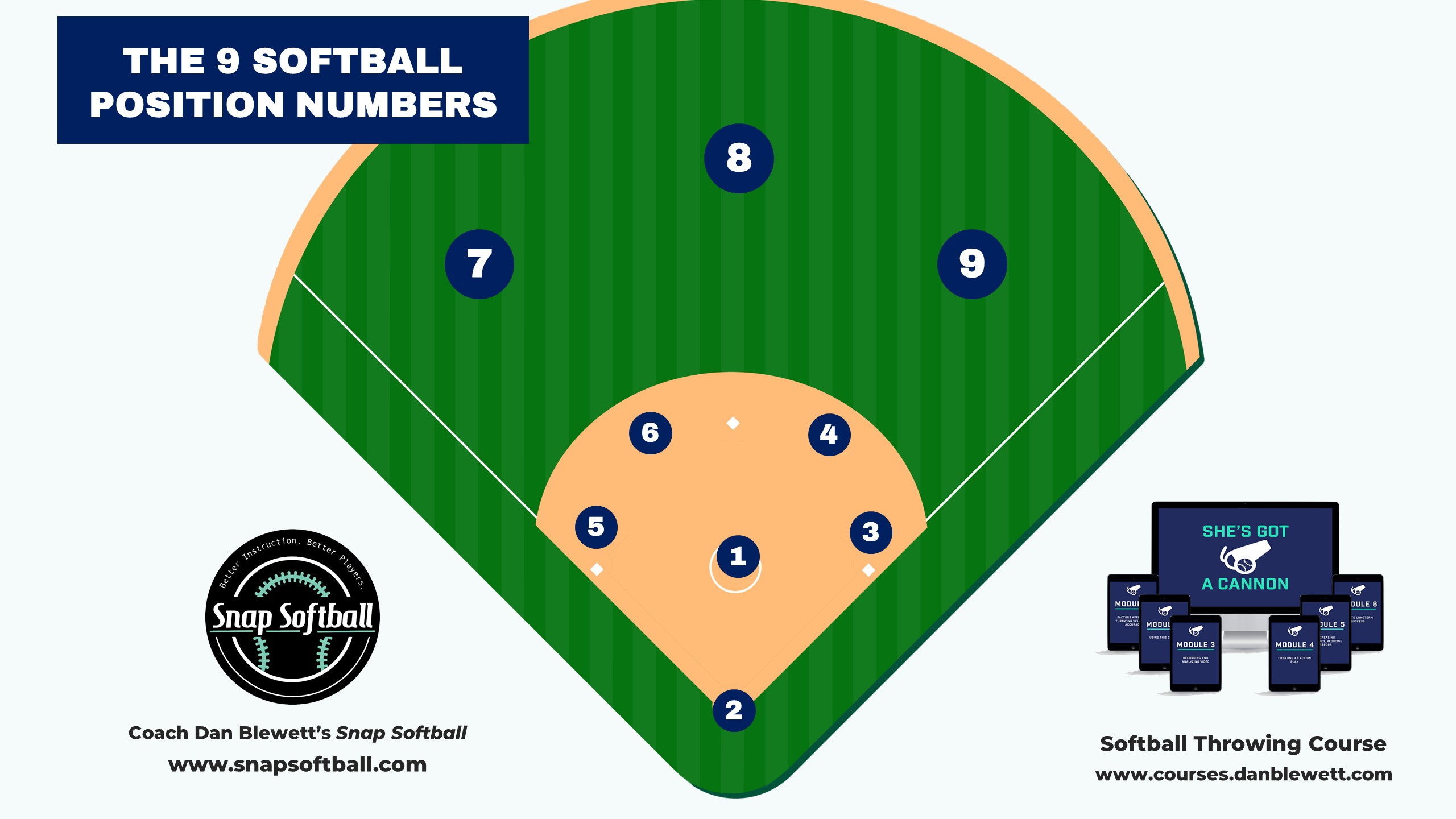
This was because originally, the shortstop was the fourth outfielder. Later, the shortstop was moved permanently to the infield but his number stuck at #6. It’s important to understand the positional numbers so that a proper scorebook can be kept and players understand the lineup and dugout card.
In this detailed guide, we’ll cover the position numbers, physical traits, skills and much more:
Skip ahead anywhere in this article on softball positioning – this applies both to fastpitch and slowpitch, though slowpitch is NOT the focus of this article.
- How hard do most fastpitch players need to throw?
- Demands, Skills & Role of a Pitcher
- Ideal Body Type and Attributes for Pitchers
- Demands, Skills & Role of a Catcher
- Ideal Body Type and Attributes for Catchers
- Demands, Skills & Role of a First Baseman
- Ideal Body Type and Attributes for First Basemen
- Demands, Skills & Role of a 2nd Baseman
- Ideal Body Type and Attributes for 2nd Basemen
- Demands, Skills & Role of a Shortstop
- Ideal Body Type and Attributes for Shortstops
- Demands, Skills & Role of a Third Baseman
- Ideal Body Type and Attributes for Third Basemen
- Demands, Skills & Role of a Left Fielder
- Ideal Body Type and Attributes for Left Fielders
- Demands, Skills & Role of a Center Fielder
- Ideal Body Type and Attributes for Center Fielders
- Demands, Skills & Role of a Right Fielder
- Ideal Body Type and Attributes for Right Fielders
- Mistake #1: Sticking too long with a position that just isn't a good fit
- Mistake #2: Not being open minded about other positions
- Mistake #3: Playing too many positions
Let’s get started with a few frequently asked questions…
Positions in Softball FAQ
What softball position is hardest?
Which is the hardest position? It’s either the shortstop, center fielder, catcher or pitcher – all are critical positions that require lots of skill, athleticism and mental toughness. The other positions require similar skills but are less demanding.
What position in softball has the strongest arm?
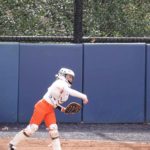
The typical answer for this is the right fielder, because they will have the longest throw to third base of all outfielders. However, it’s not really the case any more that they have the strongest arm on the entire team–they might–but the shortstop and third baseman also have tremendously strong arms. Aside from the pitcher, the strongest arm probably belongs to either the third baseman or right fielder, though it is never a firm rule and varies by team.
Which position player is the fastest?
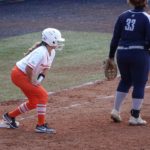
Typically the centerfielder, because she will have to run down fly balls in both the outfield gaps. The corner outfielders, shortstop and second baseman are typically the fastest players on a competitive fastpitch softball team.
What is the easiest position in softball?
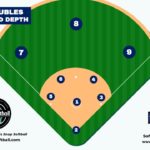
Right field, because young players don’t hit the ball very far in the air, and because 80% of athletes are right handed, fewer hard-hit fly balls will go to the opposite field (right field for a right-handed hitter). Playing right field requires decent arm strength because of the long throw to third, but the right fielder is typically the least important player on the field.
Why is the shortstop #6 and not #5?
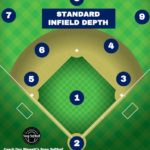
Originally, in the early years of baseball, the shortstop was the fourth outfielder. Later, the shortstop was moved but the number six stuck. Softball has the same positional numbers as baseball and so they inherited the same system.
Why are catchers and infielders usually not left-handed in softball?
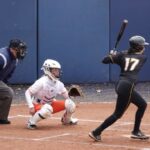
The footwork required to make throws to first base is very awkward for a left-handed 2nd baseman, shortstop or third baseman – it takes a lot of extra time and makes the throw significantly more difficult. Double-play turns for lefty middle infielders are nearly impossible. Left-handed catchers are seen occasionally in college softball but it’s rare.
We’ll start with the basics, answer a lot of questions and get to some more advanced topics on infield defense and recruiting at the end.
Diagram: All Nine Softball Position Numbers
Below is a standard softball position chart with numbers for each position.
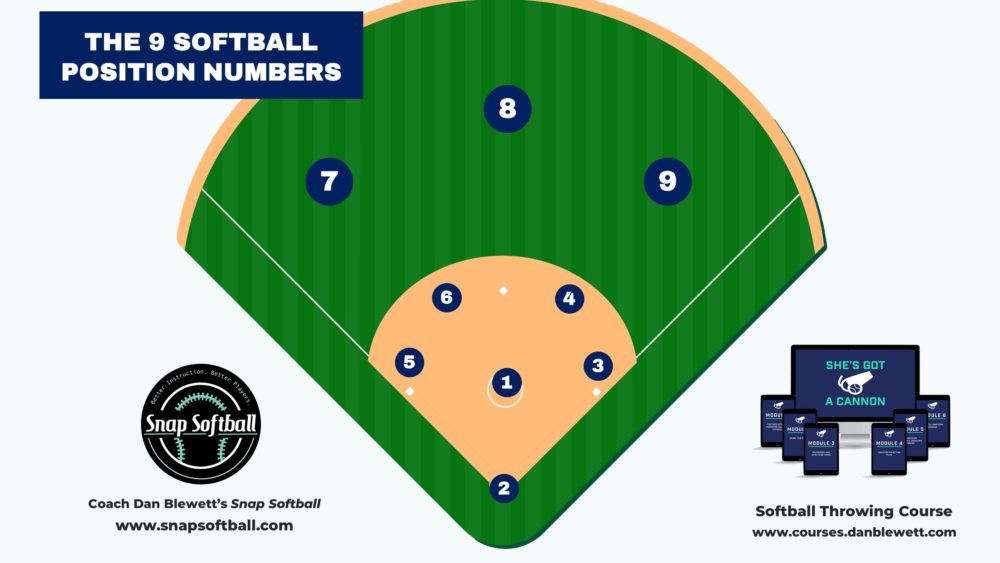
- Pitcher (P) is fielder #1
- Catcher (C) is fielder #2
- First Baseman (1B) is fielder #3
- Second Baseman (2B) is fielder #4
- Shortstop (SS) is fielder #6
- Third Baseman (3B) is fielder #5
- Left Fielder (LF) is fielder #7
- Center Fielder (CF) is fielder #8
- Right Fielder (RF) is fielder #9
The basic infield positions are shown below in diagram above, which illustrates where each player will stand in the most fundamental situations.
To get started, check out my video on the softball positions as they break down into different “bins” of player types.
Okay – let’s now discuss the body types, traits, skills and recruiting profiles of the nine positions in softball.
1. Pitchers – Position #1 on the Field
It’s very hard to win without great pitching.
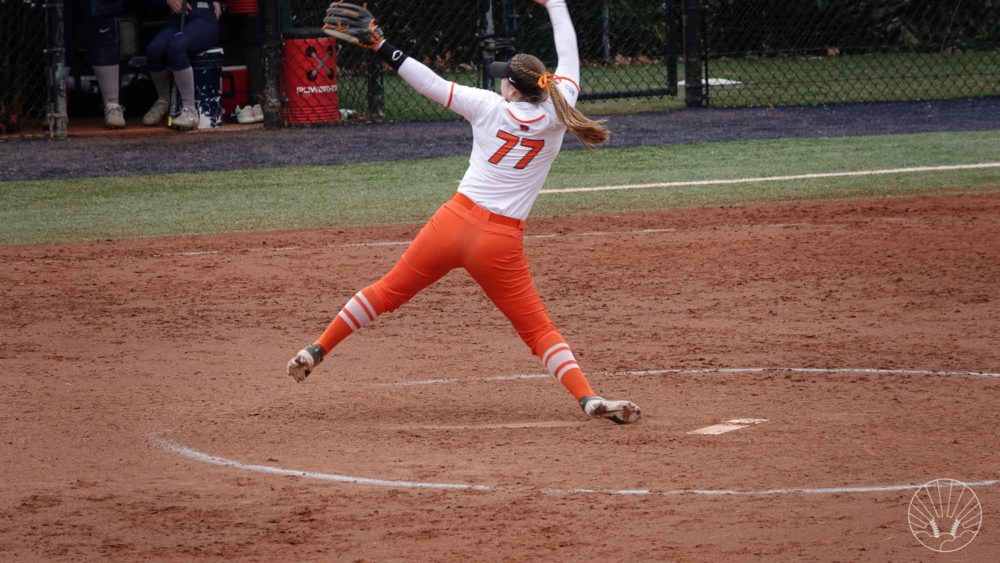
Pitchers are #1 in the softball scorebook, and they’re in control of the pace of the game. Below are some of the skills a pitcher needs:
Demands, Skills & Role of a Pitcher
- Great windmill mechanics
- Mentally tough and bounces back from failure
- Good under pressure
- Good feel for pitching and for the ball
- Repeatable and athletic delivery
- Very focused with good softball IQ
- Very competitive with leadership skills
Ideal Body Type and Attributes for Pitchers
- Tall, with long arms and legs
- Strong lower half
- Wide shoulders
- Flexible and explosive
Pitchers need great workouts to stay healthy with as much pitching as they do – if you need a great workout, try my online program below, called Early Work. Get ready to play college softball by training like a college softball player.
Need a Great
Softball Workout Plan?
Versions for all ages with a 14-Day Free Trial
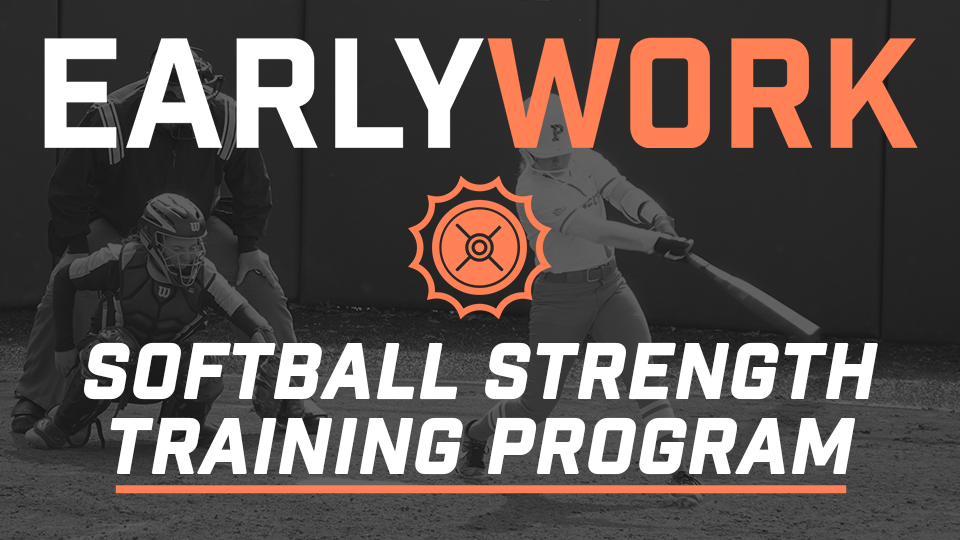
2. Catcher – Position #2 on the Field
Catchers have an extremely demanding role on the team – both physically and mentally.
Because the catcher must control and corral the pitcher, he has to be physically and mentally quick. Foul tips and long days squatting and blocking in the heat make for very long, draining days.
Demands, Skills & Role of a Catcher
- The modern catcher is getting taller and more athletic than in the past
- Catchers need to have strong legs and be able to withstand some punishment
- Hitting skills are a plus and less of a requirement
- Catchers should have a very strong arm
- Excellent hands and receiving technique
- Blocking and quick footwork are critical
- Must be very strong and smart mentally
Ideal Body Type and Attributes for Catchers
- Thick, strong and durable
- Taller catchers are becoming more common
- Slightly slimmer, more athletic and agile catchers are becoming more common
- Overall, scouts want to see catchers who are very athletic, strong and agile
Catchers need a strong arm, so if you need to work on your throwing (for any position, really) check out my free throwing webinar below.
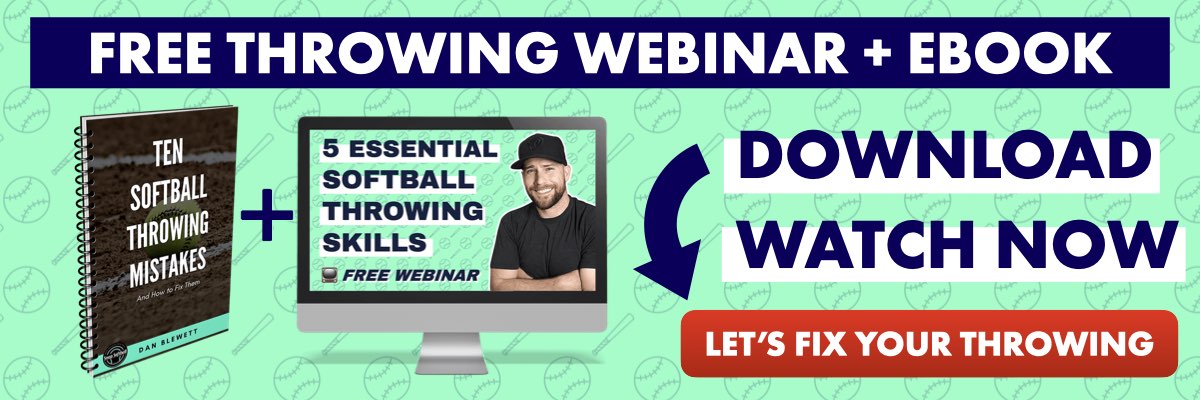
3. First Baseman – Position #3 on the Field
First baseman are the biggest power hitters on a team, and they are typically very big and relatively slow because of this.
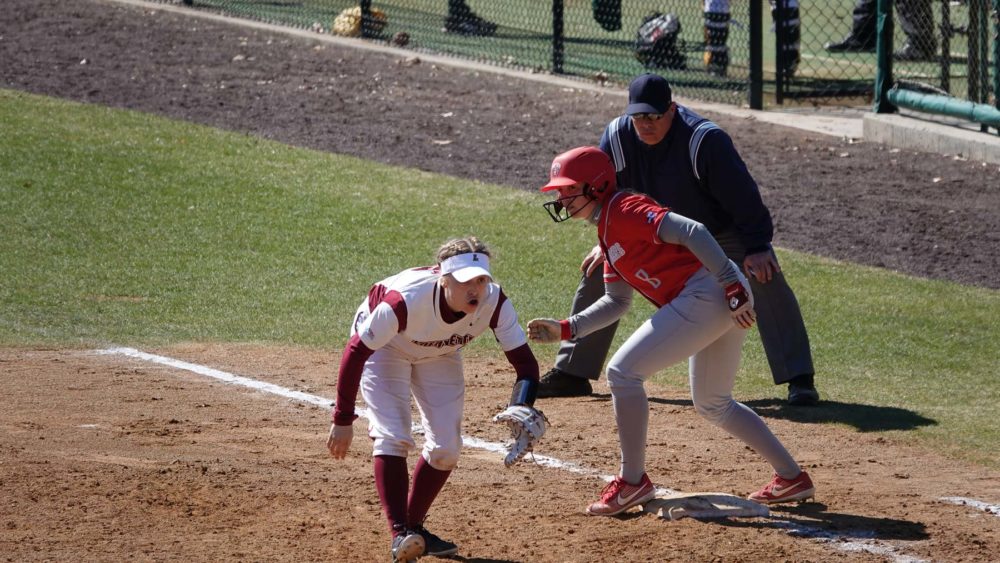
Demands, Skills & Role of a First Baseman
First baseman can often “hide” at first because they don’t often have to make long throws or move around too much. But, that doesn’t mean first base is not a difficult position – it’s easy to play an average first base, but it’s NOT easy to be great at it.
The first baseman is paid to HIT, and hit for power–that’s job #1. Beyond that, he needs to pick bad throws, be a great, large target and read throws well to get outs on every throw he can from other infielders.
Good reflexes and instincts are important, as line drives scream to first base.
Ideal Body Type and Attributes for First Basemen
- Left-handed is a plus
- Tall and powerful
- Size matters, speed not so much
- A strong arm is a bonus but not overly important
- Good fielding skills – needs to be able to pick balls and read bad throws
- Quick reflexes – batted balls come to first base HOT
- Small players will NOT get recruited to play in college as a first baseman.
If you need to improve your batting power, size and strength, definitely check out my online strength program below.
Need a Great
Softball Workout Plan?
Versions for all ages with a 14-Day Free Trial

4. Second Baseman (Position #4 on the field chart)
Second baseman in softball are typically great defensive players but often lack a strong throwing arm.
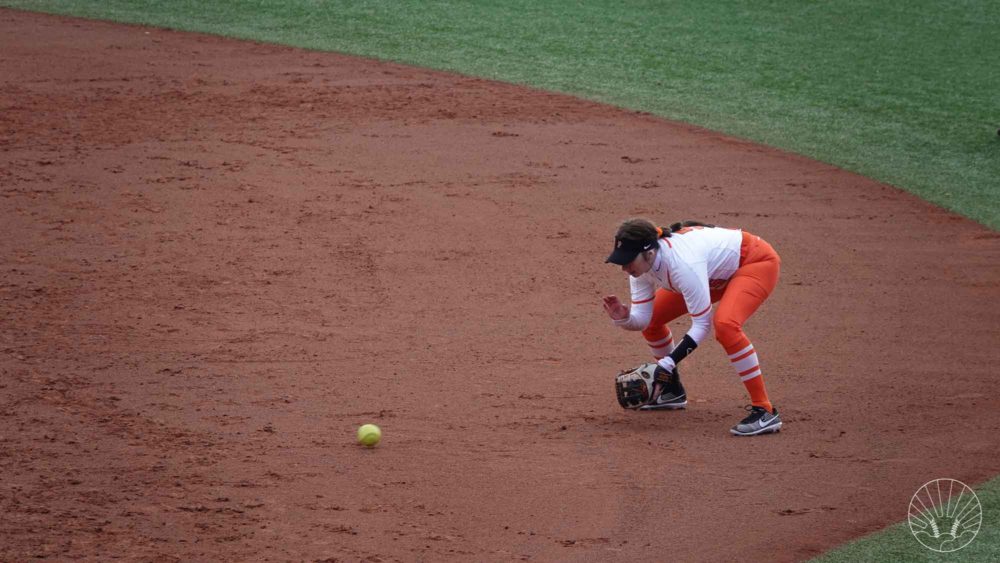
Demands, Skills & Role of a 2nd Baseman
- Very agile and quick
- Great IQ for the game
- Excellent glove and defensive skills
- Needs an adequate arm, but it doesn’t need to be a cannon
- Should be fast and a skilled contact hitter
- Typically a “spark plug” type player who gets on base and makes things happen on the basepaths
Ideal Body Type and Attributes for 2nd Basemen
Second baseman have to be very quick and agile defenders and have value on the bases. They don’t have to be big and hit for power, so they are often smaller players.
6. Shortstop – Position #6 on the Field
Sis Bates from the University of Washington, shown below, is an outstanding shortstop and epitomizes what they have to be able to do.
Shortstops are usually the best athletes on the field at all levels of softball.
Demands, Skills & Role of a Shortstop
- Must have excellent glove skills
- Excellent range and agility
- Excellent arm strength
- Excellent field vision and understanding of where to go and other players’ movement
- Hitting skills are secondary to defensive ability, however at the MLB level there is a growing importance on being threat at the plate – it’s not enough any more to hit .250 as an MLB shortstop
- Must be mentally tough and have strong leadership skills
Ideal Body Type and Attributes for Shortstops
- Shortstops are premium athletes and their body types fit this bill
- Most are 5’5 – 5’9 at the collegiate level and are fast, explosive, strong and flexible – they can run, jump and do it all
- There cannot be any defensive tool lacking to play at the highest levels – agility, glovework and arm strength must be elite
- Again, the body type is typically lean, strong and powerful
5. Third Baseman – Position #5 on the Field
Third baseman have a similar skillset to shortstops, but they hit for more power and are more offensive in general, with slightly less range and foot. Third basemen dont have to move as much compared to the SS or 2B, so they can be bigger bodied.
Third basemen in fastpitch need to be great fielders and have strong arms to make the long throw.
Demands, Skills & Role of a Third Baseman
- VERY strong arm to make long throws across the diamond
- Is NOT afraid of the ball because line drives come FAST
- Not as much fielding range as the shortstop
- One of the better power hitters on the team, typically
- Many HS shortstops are recruited as SS, but end up playing 2B or 3B in college
Ideal Body Type and Attributes for Third Basemen
- Moves very well and is fast with fast footwork
- Big, strong, athletic and agile
- Excellent hand-eye coordination
- Strong, accurate throwing arm
7. Left Fielder – Position #7 on the Field
Left fielders typically have good speed and fielding skills and are expected to be good contributors at the plate.
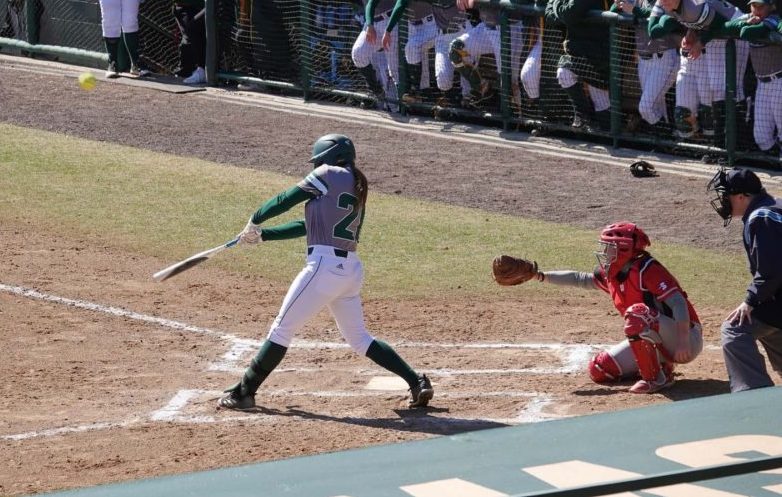
The left fielder does not need to have an amazing arm because throws arent terribly long.
Demands, Skills & Role of a Left Fielder
Left fielders need to play excellent outfield defense and thus must be fast and have a great glove.
- Good outfielder, OK arm
- Should have good speed but doesn’t need to be a burner
- Strong bat at the plate
- Typically one of the bigger hitters on the team
Ideal Body Type and Attributes for Left Fielders
- Big and strong frame but with good speed and agility
- Typically on the tall side
- Fast, lean and powerful
8. Center Fielder – Position #8 on the Field
Center field requires lots of speed and great fly ball reading ability. It’s the most demanding out field position with lots of ground to cover.
Many outfielders, because of their speed, end up converting into successful slap hitters.
Demands, Skills & Role of a Center Fielder
- Is the best fielding oufielder
- Must be very fast
- Must be excellent at reading fly balls
- Must have a strong arm
- Must be a solid hitter at the plate and a great base runner because of their speed
- Might convert into a slap hitter
Ideal Body Type and Attributes for Center Fielders
- Very similar to shortstops – center fielders are one of the best athletes on the team
- Must be explosive, lean and strong in a very athletic overall package
- Height isn’t overly important – speed and ability to track down fly balls
If you need to improve your speed, be sure to get in the weight room! Fast legs are strong legs.
Need a Great
Softball Workout Plan?
Versions for all ages with a 14-Day Free Trial

9. Right Fielder – Position #9 on the Field
Right fielders are most commonly known for their very strong arms. If you need to improve your throwing, check out my online throwing courses and the video below.
The throw from right field to third base is very long, hence the need for good arm strength.
Demands, Skills & Role of a Right Fielder
- In youth softball, the right fielder is one of the lesser players on the team because fewer fly balls are hit that way
- Right fielders should have at least modest power and good speed
- Is typically a good outfielder but not as fast or skilled as the centerfielder
Ideal Body Type and Attributes for Right Fielders
- Collegiate right fielders are athletic and fast with strong throwing arms
- Typically taller and have an athletic build
- Corner outfielders do need to have some pop in their bat
Other Positions: DH + Roles of Pinch Runner, Pinch Hitter
What is the DH in softball? The Designated Hitter is a player who only hits, and hits in place of the pitcher.
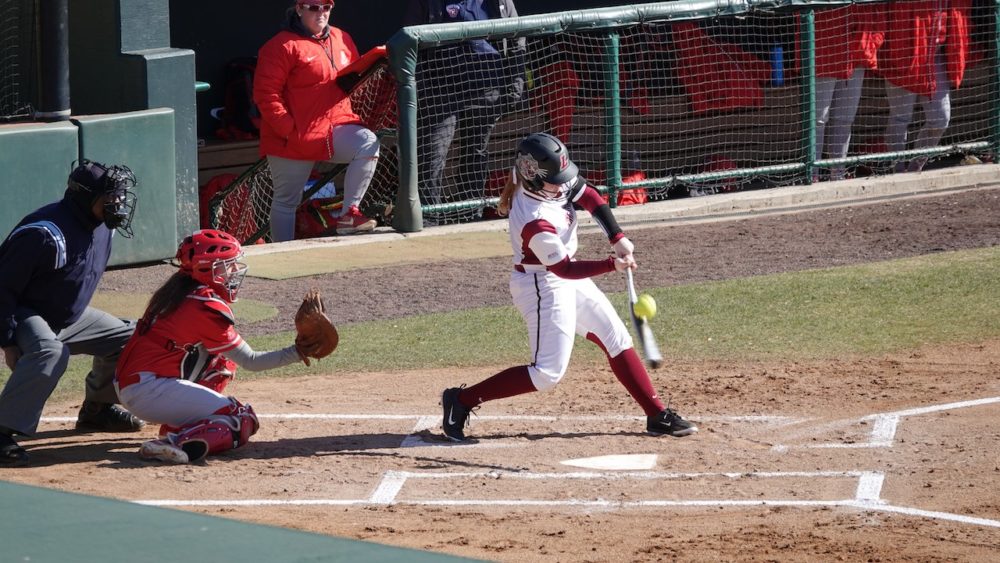
Pinch Runners enter the game to run the bases in place of another player, but this is not really a position – more just a role. Same goes for pinch hitters, who replace a hitter already in the game to bat for them.
Common Mistakes Made By Players & Parents in Choosing a Position
What position is right for a young fastpitch player?
What can help a young softball star reach the next level?
It’s both important to be well-rounded AND strong at 1-2 positions, but here are some common mistakes made by softball families.
Mistake #1: Sticking too long with a position that just isn’t a good fit
Most players want to play the exciting positions – like pitcher, shortstop, first base and centerfield.
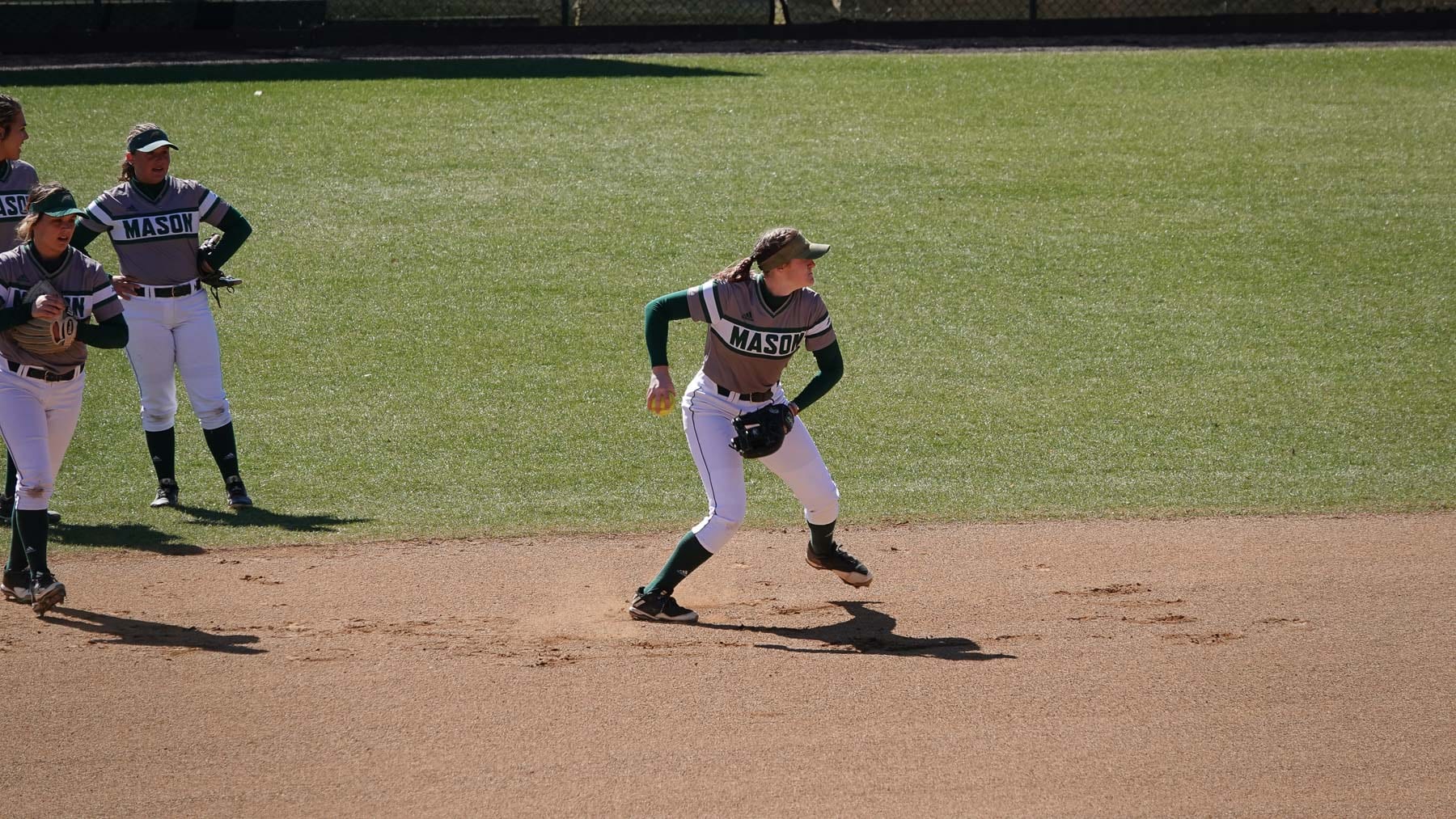
But if a player’s skillset and body type just doesn’t project well at that position–meaning if a softball player isn’t going to be big and strong and hit for power like a typical first baseman…then they need to come to terms with the position just not going to work in the long term.
You have to be honest with yourself about the demands of the position and whether or not it’s a good fit.
Mistake #2: Not being open minded about other positions
Some players have the mindset of I only play third base!
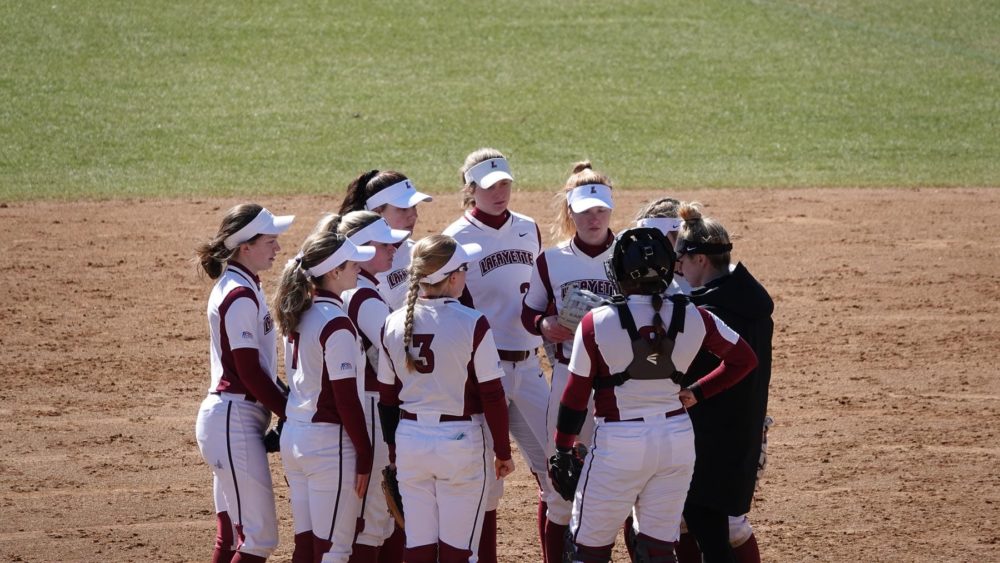
It’s fine to love one position more than the others, but in the competitive world of travel, varsity and collegiate fastpitch, it just may not be realistic that a player can start at that position as they rise. If a team already has an amazing third baseman…being flexible will help get playing time elsewhere.
Be willing to learn and play other positions – it may keep you off the bench.
Mistake #3: Playing too many positions
I also see players and parents fall into the trap of playing too many positions at the high school level, where scouts may not be sure where they fit in.
Being versatile is a great thing and having utility in more than one position can help a player.
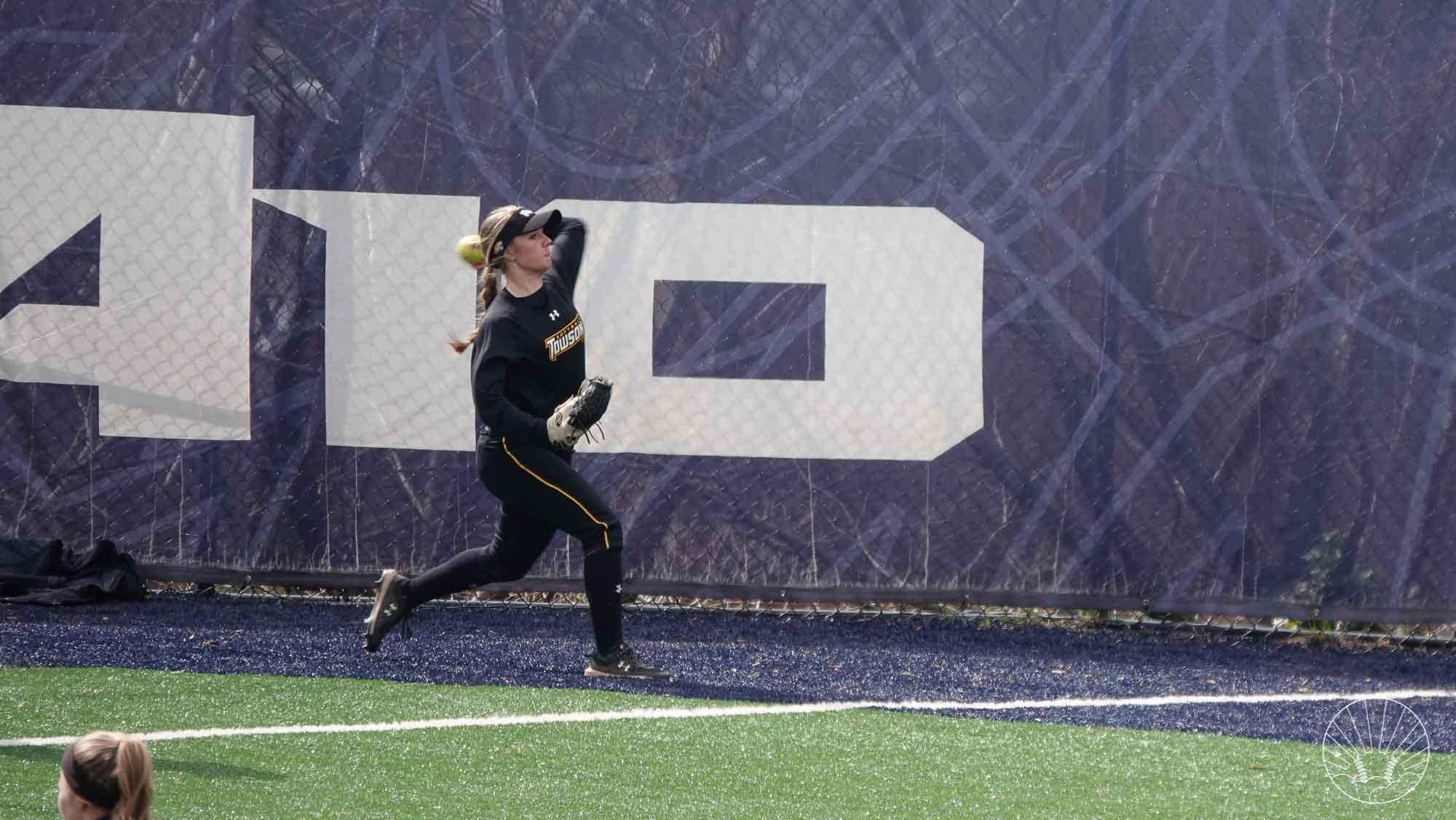
Yet, playing lots of positions with average skill isn’t better than playing a few really well.
More Softball Resources
Sign up for my email list – you’ll get my free throwing ebook and updates on new videos and articles like this one.
- Subscribe to my Softball YouTube Channel
- Read My Article on Beginner Throwing Footwork
- My Article on Building Great Softball Workouts
- Sign up for a free trial of my Softball Online Strength Program
And check out my [She’s Got a Cannon] Softball Overhand Throwing Courses.
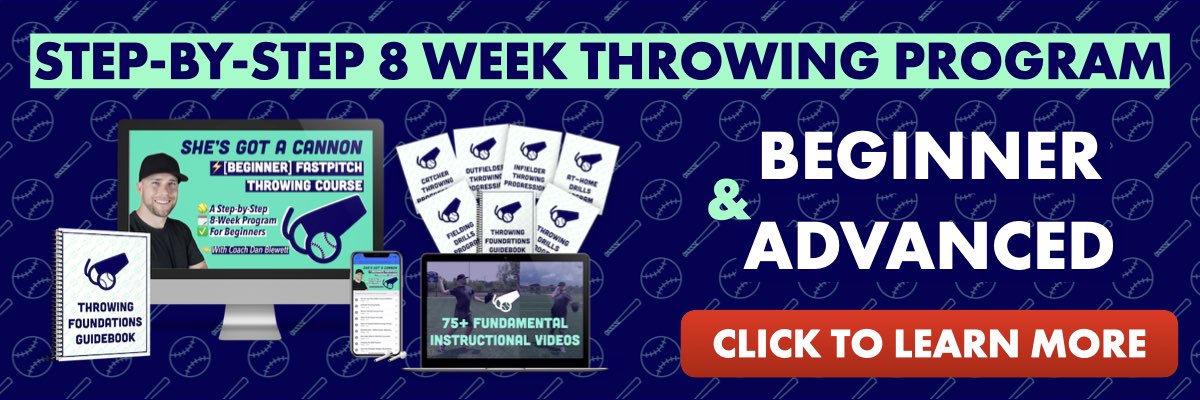
Thanks for reading – I hope this overview of positions was helpful! – Coach Dan Blewett

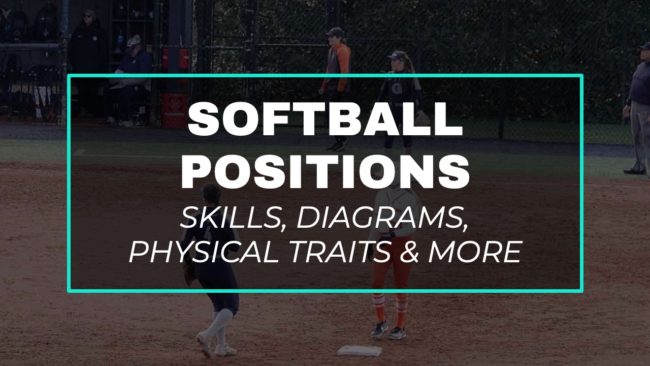
Pingback: Softball Batting Power: 5 Ways to Increase It
Pingback: Two Pitch-Calling Mistakes that Cause High Pitch Counts - Elite Baseball Performance
Pingback: How to Create High-Velocity Softball Throwing Mechanics
Pingback: 5 Easy Ways Softball Players Can Throw Harder - Coach Dan Blewett
I enjoyed reading your write up Coach Dan Blewett, you’re doing a good job. It’s just like a refresher course for me. Thanks.
thanks for reading!
In Girls HS softball, can a team play 3 infielders and 4 outfielders (rover)?
I dont think so.